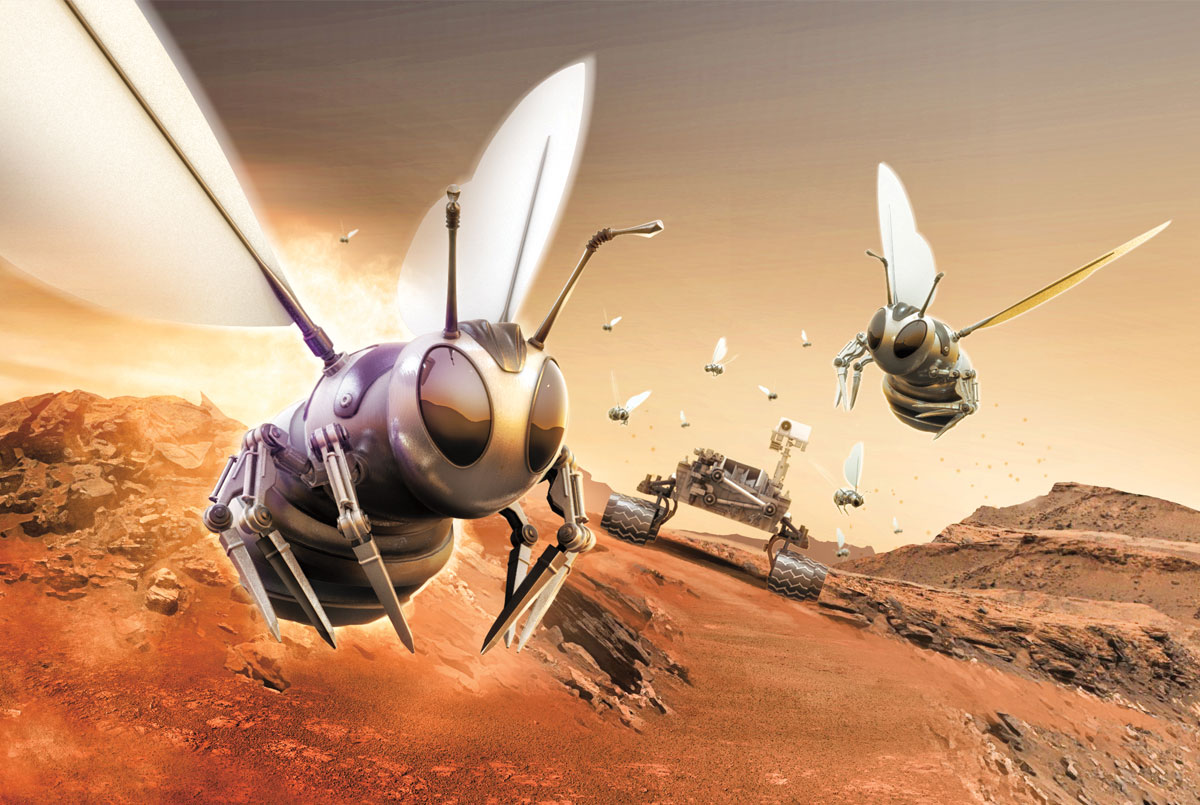There’s no sign of alien life on Mars yet, but soon the planet could be swarming with robotic bees.
NASA, the U.S. space agency, is designing tiny winged robots the size of bumblebees, which scientists hope to start using to explore the Red Planet within the next decade.
The idea is that the space fliers, called Marsbees, will study Mars alongside slower, wheeled vehicles, such as the Curiosity rover. The micro-bots are fast-moving, can cover much more ground, and are cheaper to make and operate.
Once on Mars, the rechargeable sensor-equipped robots will fly all over the planet to measure weather patterns, detect atmospheric conditions, map out the rocky terrain, and look for signs of life. NASA hopes the cyber-insects will help pave the way for a human mission to Mars by 2030.
“We need to know more about the environment before sending humans to Mars,” says Kevin Crosby, a physics professor at Carthage College in Wisconsin. “Marsbees will allow us to learn more about the Mars surface than we ever could with a rover because they can fly almost anywhere.”


